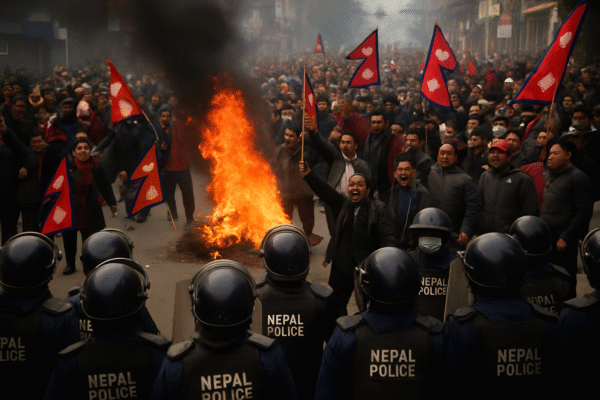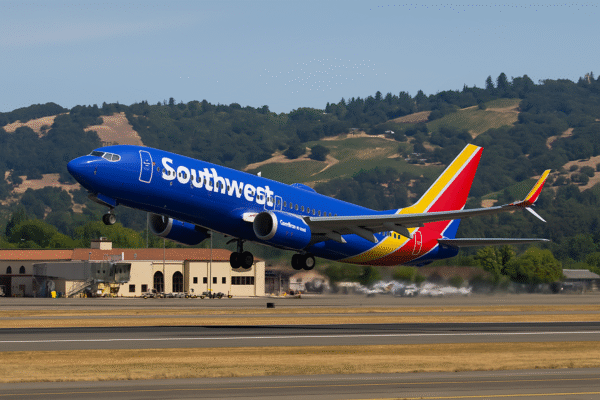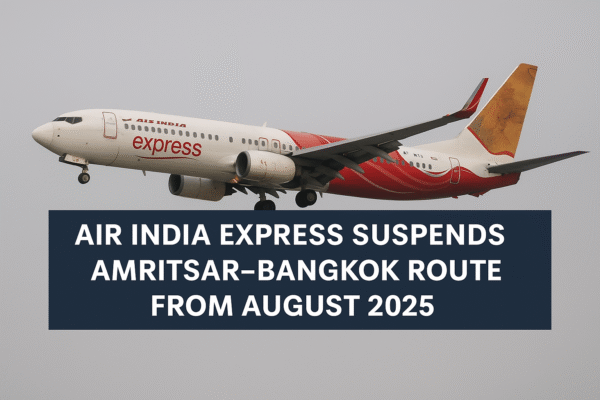In a strategic shift that has raised eyebrows across the aviation and tourism sectors, Air India Express will terminate its direct flight service between Amritsar (ATQ) and Bangkok Suvarnabhumi (BKK) starting August 2025. The airline confirmed the suspension due to low passenger load factors and an inability to achieve financial sustainability on the route—a blow to Amritsar’s ambitions of becoming a key international gateway to Southeast Asia.
Despite being a popular cultural and religious destination with global appeal, Amritsar’s international connectivity to Southeast Asia is now facing renewed uncertainty. Between January and May 2025, the route saw only 16,993 passengers, with a load factor of just 67.27%, far below the industry norm of 75–80% needed to break even on international routes.
A Missed Opportunity for Amritsar’s Tourism Economy
Amritsar, home to the iconic Golden Temple and rich Sikh heritage, had positioned itself as a gateway for Southeast Asian tourists and Indian travelers heading to Thailand and beyond. However, the cancellation of this route is the second major withdrawal in less than a year, following Batik Air Malaysia’s earlier exit from the Kuala Lumpur–Amritsar route.
While the Air India Express service offered competitive fares—often ranging between USD 170–220 roundtrip—it failed to generate year-round traffic. Analysts suggest that without strong hub connectivity or premium business travel, the route’s survival was difficult. The city’s reliance on point-to-point traffic, mostly leisure and seasonal travelers, proved insufficient to maintain operational viability.
Regional Competition Adds Pressure
The performance of Thai Lion Air, operating four weekly flights on the Amritsar–Bangkok Don Mueang (DMK) route, reflects similar demand weakness. Between November 2024 and May 2025, Thai Lion Air served 26,775 passengers, registering a 63.09% load factor. This underscores broader structural issues affecting Amritsar’s Southeast Asia links: insufficient year-round demand and limited business-class patronage.
Unlike larger international hubs such as Delhi (DEL) or Mumbai (BOM), Amritsar lacks strong hub connectivity and transit traffic, limiting its attractiveness for airlines seeking higher yield and route sustainability.
Strategic Shift: Bangkok Services Focused on Tier-2 Cities
Air India Express, part of the Tata Group-owned Air India family, has refocused its Bangkok services on cities like Pune, Surat, and Lucknow, where diaspora-driven demand and better market balance provide a stronger foundation for long-term operations. These cities offer more consistent year-round traffic and higher overall passenger volumes.
While these alternate cities do not serve Punjab’s travelers directly, they provide options for passengers willing to transit through larger domestic airports.
Tourism and Aviation Experts Voice Concern
Industry experts and tourism stakeholders are calling for a more nuanced and long-term strategy to develop Amritsar’s international profile. “It’s not just about launching new flights,” said an official from India’s Ministry of Civil Aviation. “You need sustained demand, transit flows, premium travelers, and coordination with tourism boards and airport authorities.”
The Punjab Tourism Department, which has long promoted Amritsar as an international tourism hub, is expected to work with central aviation authorities to revive interest in viable overseas connections, potentially through code-sharing agreements or charter collaborations.
Economic and Cultural Implications
The route cancellation is not only a commercial decision but also a cultural loss. Many religious pilgrims, business travelers, and leisure tourists from Southeast Asia—especially Thailand, Malaysia, and Singapore—had begun using the direct Amritsar route for visits to Punjab’s spiritual sites. The loss of direct air access may now require travelers to transit through Delhi or Mumbai, increasing both cost and travel time.
Local businesses that cater to international tourists—hotels, tour operators, and transport providers—are also expected to feel the ripple effects of this cancellation during the upcoming winter travel season.
The Broader Aviation Lesson: Capacity Alone Is Not Enough
The case of Amritsar–Bangkok is an important reminder for India’s rapidly growing aviation sector. With the government pushing for more international air connectivity under the UDAN scheme and other initiatives, airlines and policymakers must factor in market sustainability, load predictability, and target traveler segmentation.
Just because international capacity can be added quickly does not guarantee that it will succeed long-term. Without business traffic, hub connections, or coordinated tourism promotion, even strategically important routes may fail to take off.
What Lies Ahead for Amritsar?
As Amritsar reassesses its role in India’s international aviation strategy, multi-stakeholder planning will be key. Future Southeast Asia routes might need to align with religious tourism packages, include charter flights, or offer seasonal schedules during peak travel periods like Vaisakhi and winter holidays.
Until such a plan materializes, passengers from Punjab seeking to visit Bangkok or Southeast Asia will have to rely on indirect connections. For now, the last direct Air India Express flight to Bangkok from Amritsar will operate on July 30, 2025.
Conclusion:
The suspension of Air India Express’ Amritsar–Bangkok flight is a sobering reality check for regional aviation planners. While it underscores the growing complexities of international route planning, it also highlights new opportunities for collaborative models in India’s aviation future. As Amritsar regroups, the hope remains that smarter, more sustainable connections will replace the lost link, keeping the city on the global aviation map.
For more travel news like this, keep reading Global Travel Wire
















